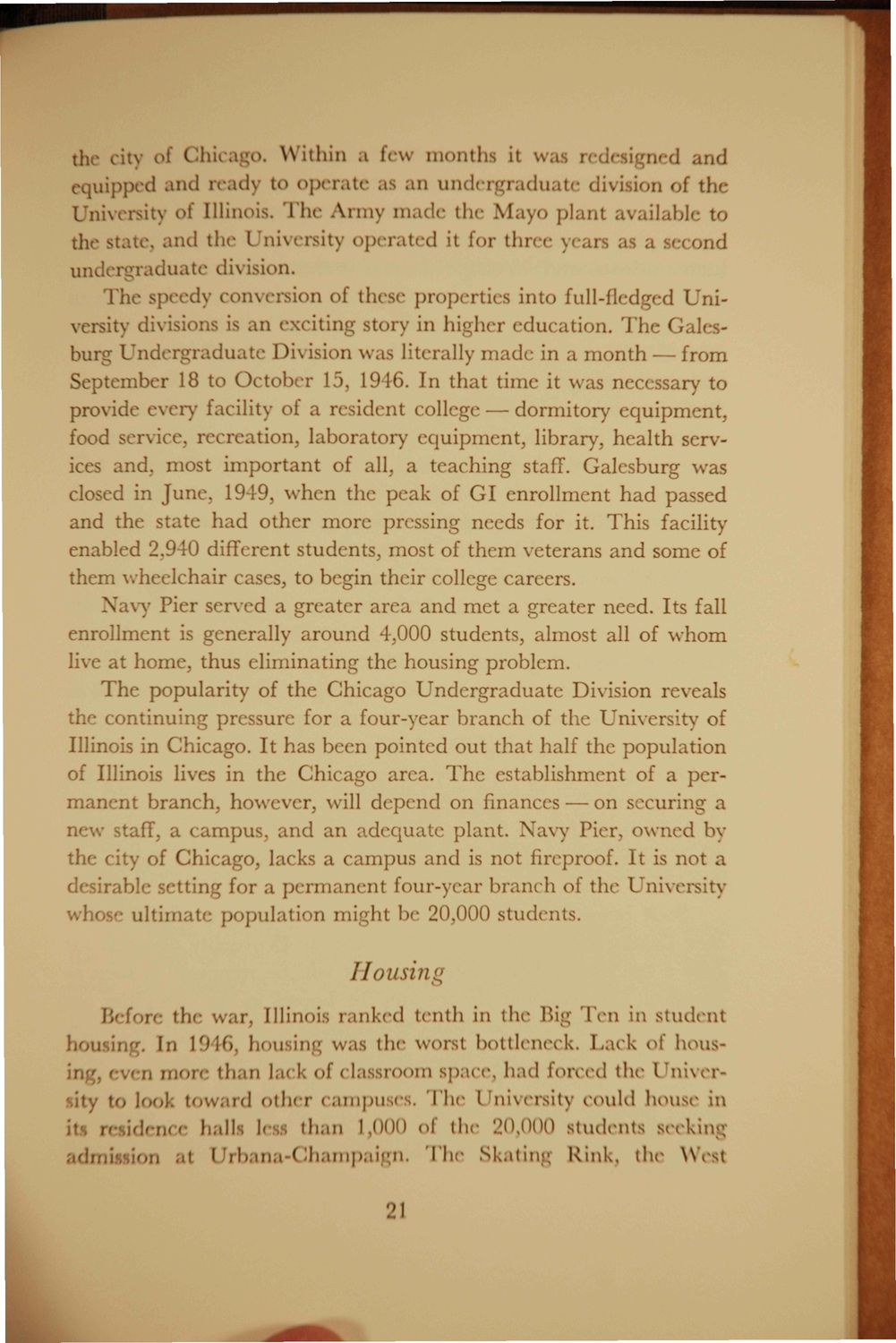| |
| |
Caption: Book - Four-Year Report of UI President (1950)
This is a reduced-resolution page image for fast online browsing.

EXTRACTED TEXT FROM PAGE:
the city of t hica ^ Within a few months it was re< ncd and equipped and ready to operate . n undent.uluat division of the University of Illinois. The Army made th< Mayo plant availahle to the state, and the University operated it for three j an a a second undergraduate division. The speedy conversion of these properties into full-fledged University divisions is an exciting story in higher education. The Galesburg Undergraduate Division was literally made in a month — from September 18 to October If), 1916. In that time it was necessary to provide every facility of a resident college — dormitory equipment, food 8 rviee. n reation, laboratory equipment, library, health serviees and. most important of all, a teaching stafl. Galesburg was closed in June, 1949, when tin : ik of GI enrollment had passed and the state had other more pressing needs for it. This facility enabled 2.940 different students, most of them veterans and some of them wheelchair eases, to begin their college careers. Navy Pier served a greater area and met a greater need. Its fall enrollment is generally around 4,000 students, almost all of whom live at horn thus eliminating the housing problem. The popularity of the Chicago Undergraduate Division reveals the continuing pressure for a four-year branch of the University of Illinois in Chicago. It has been pointed out that half the population of Illinois lives in the Chicago area. The establishment of a permanent branch, however, will depend on finances — on securing a new staff, a < ampus, and an adequate plant. Navy Pier, owned by the city of Chicago, lacks a campus and is not fireproof. It is not a desirable setting for a permanent four-year branch of the University whose ultimat populati n might be 20.000 students. Housing Brfore the war. Illinois ranked tenth in the Big Ten in student housing. In 194b, housing was the worst bottleneck. I k oi housing, even rnon than la< I; of ( lassroom spare, had forced the I 'niver- ity to look toward other campuses. The University could house in its residence halls less than 1,000 of the 20,000 students seeking admission at ( rbana-Champaign. The Skatin 21 l\ink. the West
| |